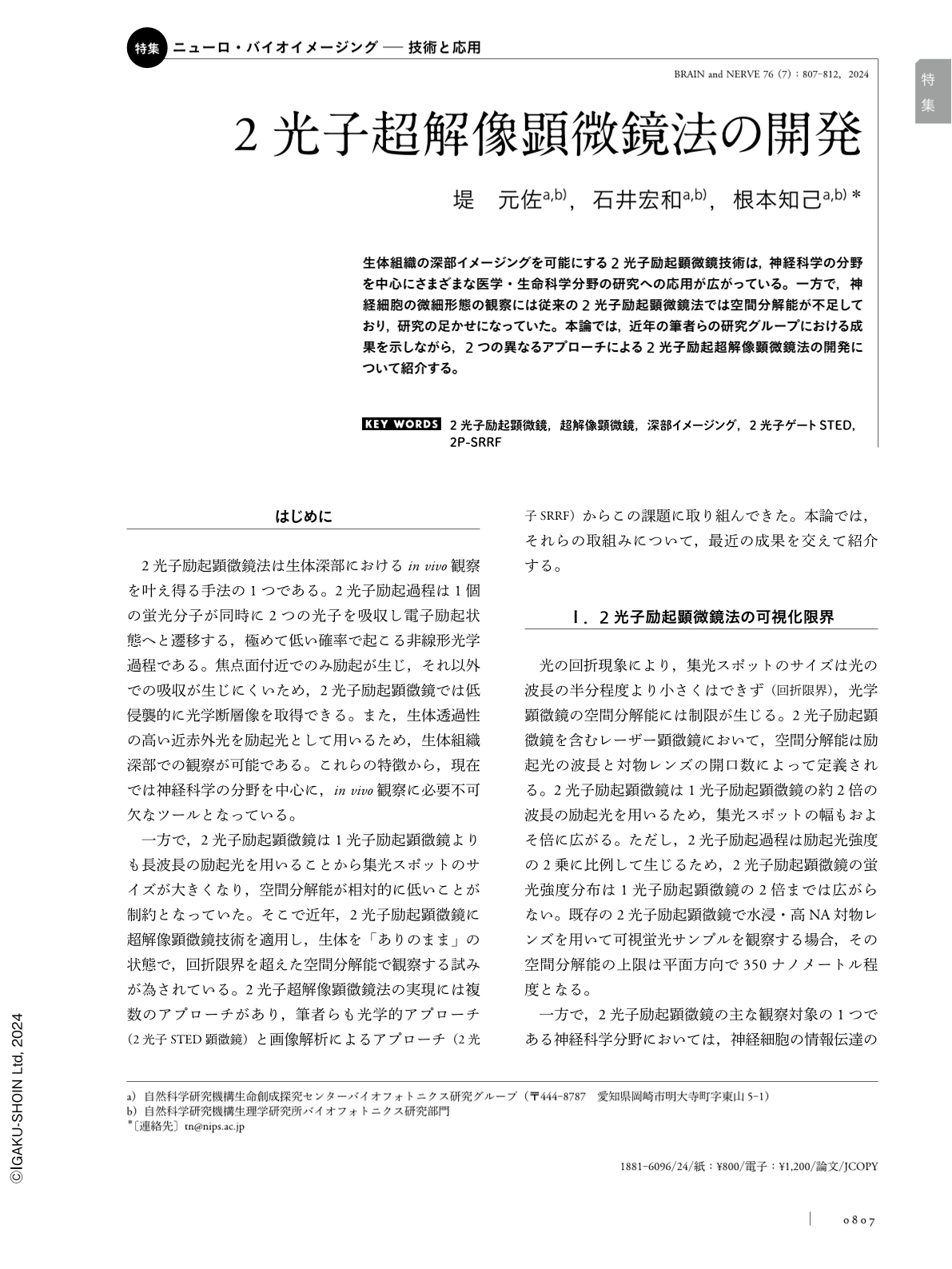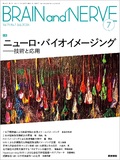Japanese
English
- 有料閲覧
- Abstract 文献概要
- 1ページ目 Look Inside
- 参考文献 Reference
生体組織の深部イメージングを可能にする2光子励起顕微鏡技術は,神経科学の分野を中心にさまざまな医学・生命科学分野の研究への応用が広がっている。一方で,神経細胞の微細形態の観察には従来の2光子励起顕微鏡法では空間分解能が不足しており,研究の足かせになっていた。本論では,近年の筆者らの研究グループにおける成果を示しながら,2つの異なるアプローチによる2光子励起超解像顕微鏡法の開発について紹介する。
Abstract
Two-photon excitation microscopy enables in vivo deep-tissue imaging within organisms. This technique is based on two-photon excitation, a nonlinear optical process that uses near-infrared light for excitation, resulting in high tissue permeability. Notably, two-photon excitation occurs only near the focal plane; therefore, minimally invasive tomographic images can be obtained. Owing to these features, two-photon excitation microscopy is currently widely used in medical and life-science research, particularly in the domain of neuroscience for in vivo visualization of deep tissues. However, the use of long-wavelength excitation light in two-photon excitation microscopy has resulted in a larger focused spot size and relatively low spatial resolution, which is a limitation of this technique for further applications. Recent studies have described super-resolution microscopy techniques applied to two-photon excitation microscopy in an attempt to observe living organisms “as they are in their natural state” with high spatial resolution. We have also addressed this topic using an optical approach (two-photon stimulated emission depletion microscopy) and an image analysis approach (two-photon super-resolution radial fluctuation). Here, we describe these approaches together with a discussion of our recent accomplishments.

Copyright © 2024, Igaku-Shoin Ltd. All rights reserved.


